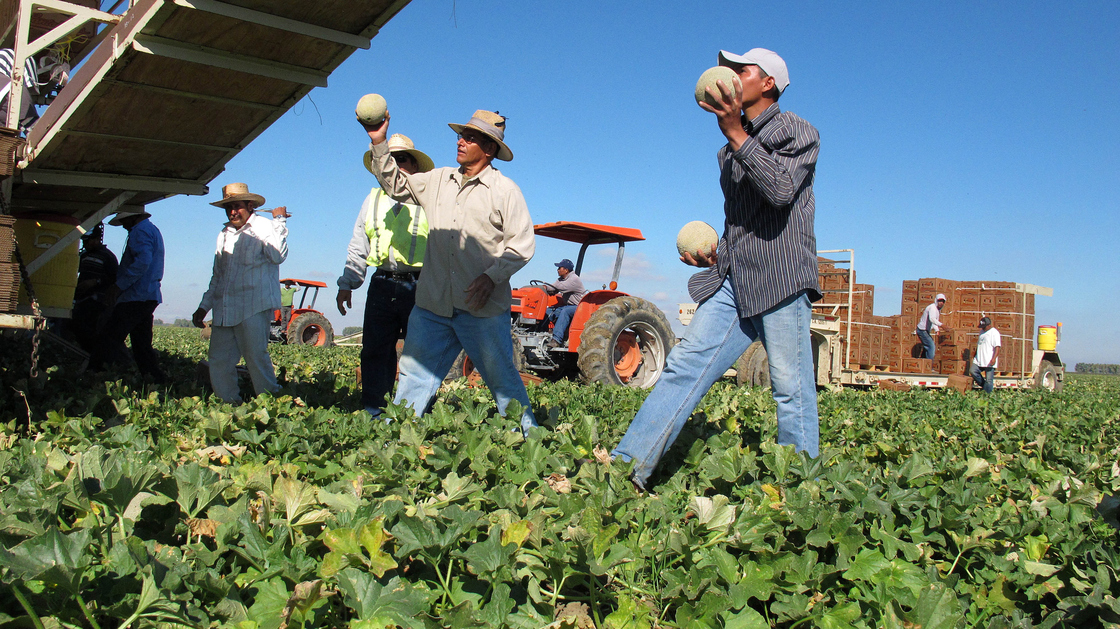
Post by Dan Charles, The Salt at NPR Food (7/18/13)
Advocates for farmworkers, especially those who grow America's leafy greens and fresh vegetables, are pushing the government to do more to protect those workers from exposure to pesticides.
A 20-year-old regulation — the Worker Protection Standard — is supposed to prevent harmful pesticide exposures on the farm. But activist groups like Farmworker Justice say it falls short, and the Environmental Protection Agency is currently working on a new version.
A new report from Farmworker Justice points out that under the current rules, farm workers don't get nearly as much information about hazardous chemicals they may encounter as, say, factory workers. (Industrial workers are covered by different regulations, issued by the Occupational Safety and Health Administration.)
And then there's the barrier of language. Pesticides carry warning labels that spell out health risks and how workers should protect themselves — but those labels are usually in English. More than 80 percent of the workers in the "salad bowls" of Salinas, California, or Yuma, Arizona, are Hispanic. Many have difficulty communicating in English.